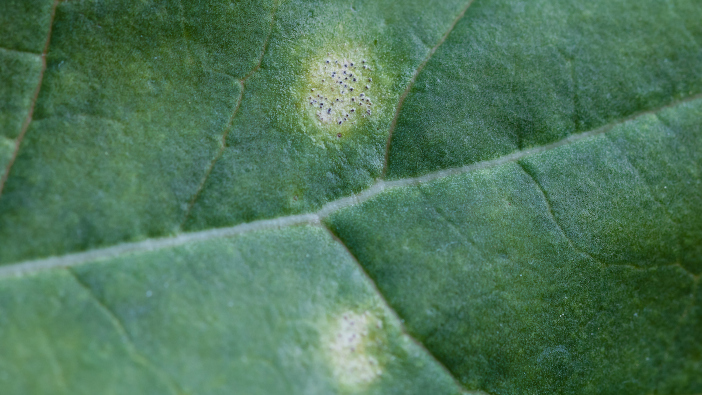Hutchinsons is warning oilseed rape growers of the risk of late phoma and light leaf spot over the next few weeks.
David Howard, head of integrated crop management, notes that the dry August and September delayed the onset, but the mild temperatures and wet weather mean that the risk has increased.
“If temperatures remain high, it will also increase the speed of transmission from the phoma leaf symptoms into the stem, causing the more damaging stem canker.”
Tools, including the AHDB phoma forecast, are available to indicate disease pressure and the estimated treatment threshold date, but growers should be vigilant to variations in local conditions and crop maturity.
“Smaller crops are generally more at risk than larger crops as they have less distance for the fungus to travel before entering the stem and forming canker. But, given the higher temperatures forecast, even large crops will be at risk as temperature increases speed of movement.”
The threshold for phoma leaf spot is infection on 10-20% of plants, but David suggests that in smaller crops, a fungicide application may be worth it at the lower end of this.
The late onset of phoma will likely coincide with light leaf spot, enabling growers to tackle both at the same time. Light leaf spot is difficult to treat curatively, so varieties with a weakness to the disease must be prioritised.
“The choice of early fungicide should be based around varietal risk scores for both phoma and light leaf spot and the growth regulatory requirement of the crop.”
David recommends prothioconazole and tebuconazole based products, or bixafen plus prothioconazole formulations, while difenoconazole can be used against phoma when no plant growth regulators are required.
“Given the level of variation in crop drilling date and size, PGR requirements will be different across farms and fields. Where crops are significantly advanced, the best approach is likely to utilise a dedicated growth regulator, such as mepiquat + metconazole, as this offers higher growth regulatory activity and timing flexibility, because you are not waiting for the crop’s disease control requirements.”


